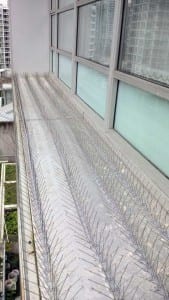 Pune railway has forbidden citizens from feeding pigeons at the kabutarkhana, as its excreta is harming the heritage building
Pune railway has forbidden citizens from feeding pigeons at the kabutarkhana, as its excreta is harming the heritage building
It would not be hyperbolic to term them a killer flock — heritage conservationists and experts across the nation have documented how pigeon excreta has destroyed precious art and the challenge they face in the clean-up process. Closer home, the birds have unleashed havoc among passengers as well as staff at Pune Railway Station, provoking the authorities to put up a warning sign near the popular kabutarkhana and Mahatma Gandhi statue, barring citizens from feeding the pigeons, as it leads to an insurmountable task for the authorities to clean up the excreta.
“The pigeon population around the railway station’s premises has multiplied in recent times, thanks to people flocking here to dole out morsels of food. Their presence is affecting the heritage structure of the railway station. Its roof, the rooms inside and the passages have become very unclean. A few days ago, they had also invaded the VIP lounge and dormitories, leading to a rush of complaints from passengers,” said Sunil Kamthan, station manager at Pune Railway Station. He went on to say that the premises have to be mopped at least six times daily because of this invasion, and that even after, a strong stench lingers along the corridors. “We spent more than a lakh cleaning the roof and shelves of the building,” added Kamthan.
Since simply propping up a warning sign is not known to dissuade people from doing as they please, officers at the station have taken it upon themselves to walk up to the erring citizen to urge them to halt the act. “We have not imposed any fine for feeding the birds yet, but if this persists despite the warning, we will be forced to mandate punitive action,” said Kamthan.
Paresh Jagtap, a passenger, has welcomed the railway’s move, although he finds the flight of pigeons a pleasant sight on the premises. “The warning is legit, but they should continue in their efforts to keep the station premises clean,” said Jagtap. Vivek Bunthambe, a member of the cleaning staff at the railway station, said, “We have cleaned the entire building several times in one year, particularly the upper roof, and yet there is excreta all over the building. The passengers complain about the foul odour that the pigeons leave behind.”
Pigeon excreta is known to stain the surface of abuilding, gradually setting in the process of corrosion. “We generally water jet an unclean surface before restoration. The water is laced with lemon or cinnamon, but even this does not work on pigeon droppings and we have to use caustic chemicals for such spots. Besides this, the bacteria from the droppings attract termites, especially on limestone. And when such termites establish a colony, rats are attracted to feed on them, which establishes a cycle,” said V M Sharma, a civil engineer and contractor who has worked on the restoration of various Pune Municipal Corporation (PMC) projects, as well as the restoration of the Red Fort, in New Delhi.
Mumbai-based conservation architect, Abha Narain Lambah, who has worked on the Victoria Memorial, Kolkata and the Tata Palace, Mumbai, where the Deutsche Bank is housed, called attention to the strong acids in the excreta that affect oft stones such as limestone and marble. “It corrodes the surface, discolouring it; at times, even small pits appear on the surface,” said Lambah.
Tejas Garge, an archaeologist from Central Archeological Survey of India, said the phosphorous in the pigeon excreta is known to damage monuments, and hence, too many pigeons around heritage structures can be harmful. “When pigeon excreta lodges inside intricate designs, they are ruined forever. The only thing that remains is stone. It affects the plastering, damaging the structure, as in the case of the Ajanta and Ellora caves. After a rigorous study on the damages, bird proof nets have been put up at these places,” said Garge.
Pigeon excreta corrodes the surface, discolouring it. In some cases, small pits are known to appear on the surface
About Pigeon Patrol:
Pigeon Patrol Products & Services is the leading manufacturer and distributor of bird deterrent (control) products in Canada. Pigeon Patrol products have solved pest bird problems in industrial, commercial, and residential settings since 2000, by using safe and humane bird deterrents with only bird and animal friendly solutions. At Pigeon Patrol, we manufacture and offer a variety of bird deterrents, ranging from Ultra-flex Bird Spikes with UV protection, Bird Netting, 4-S Gel and the best Ultrasonic and audible sound devices on the market today.
Voted Best Canadian wholesaler for Bird Deterrent products four years in a row.
Contact Info: 1- 877– 4– NO-BIRD (www.pigeonpatrol.ca)

